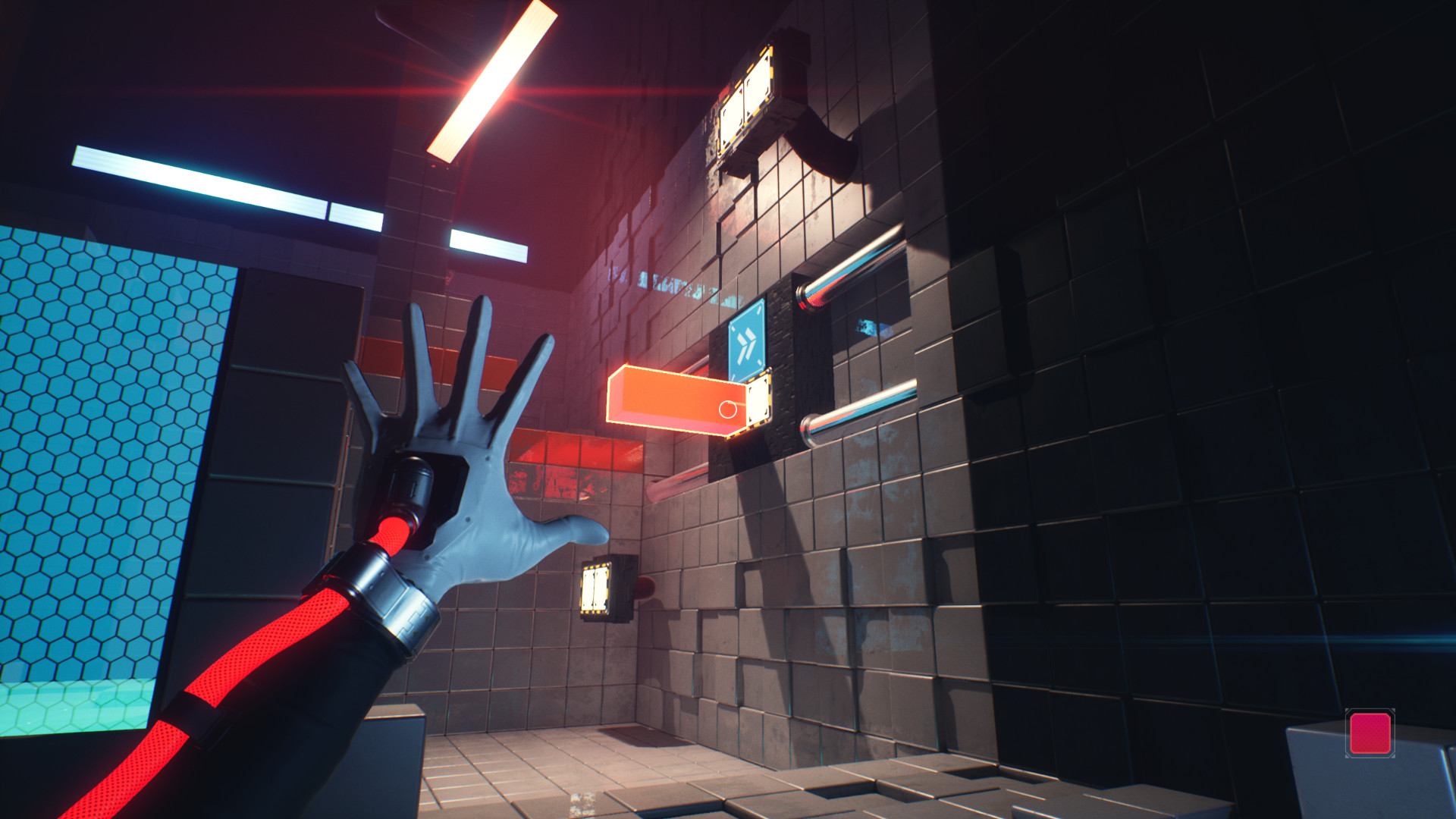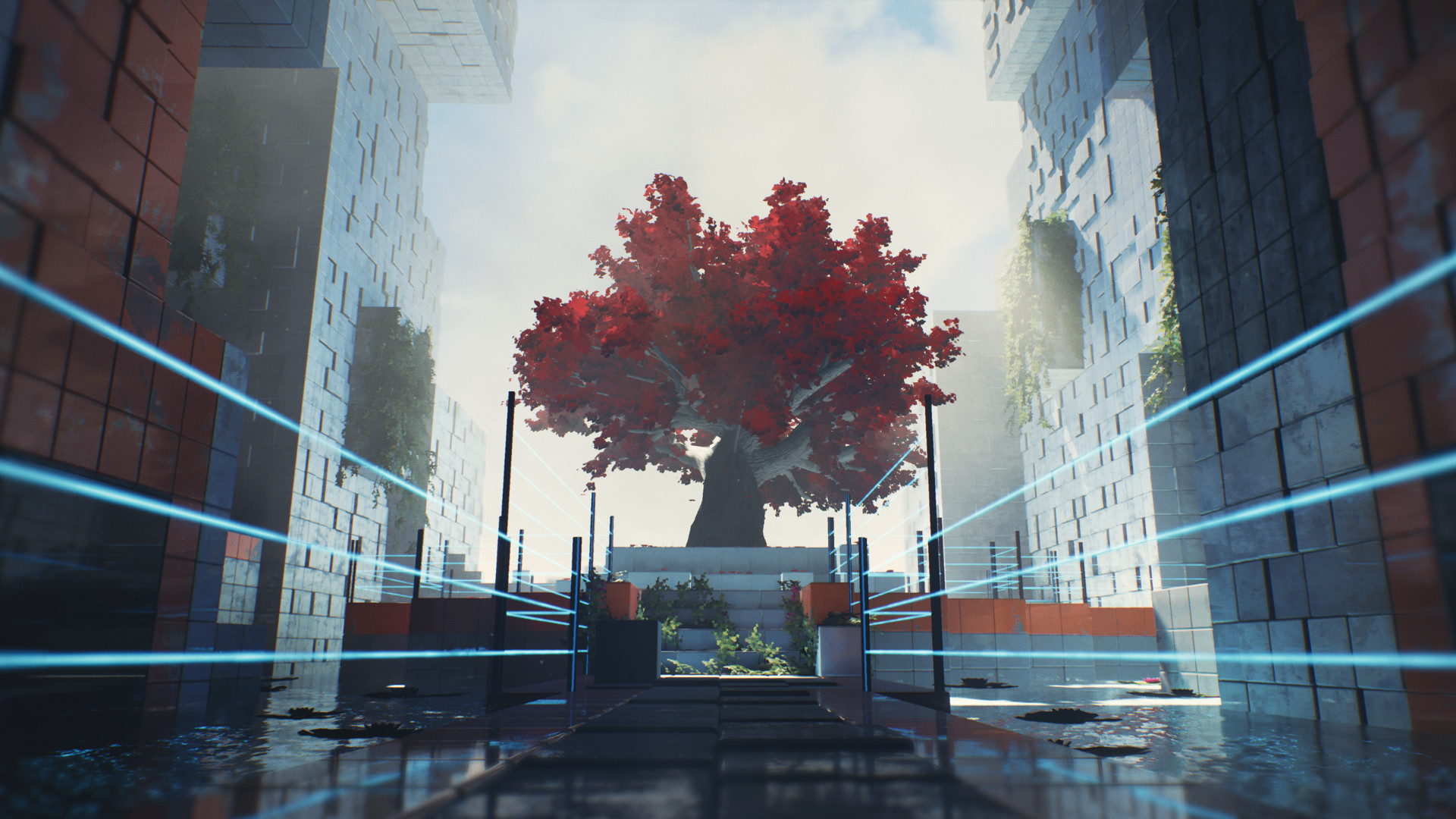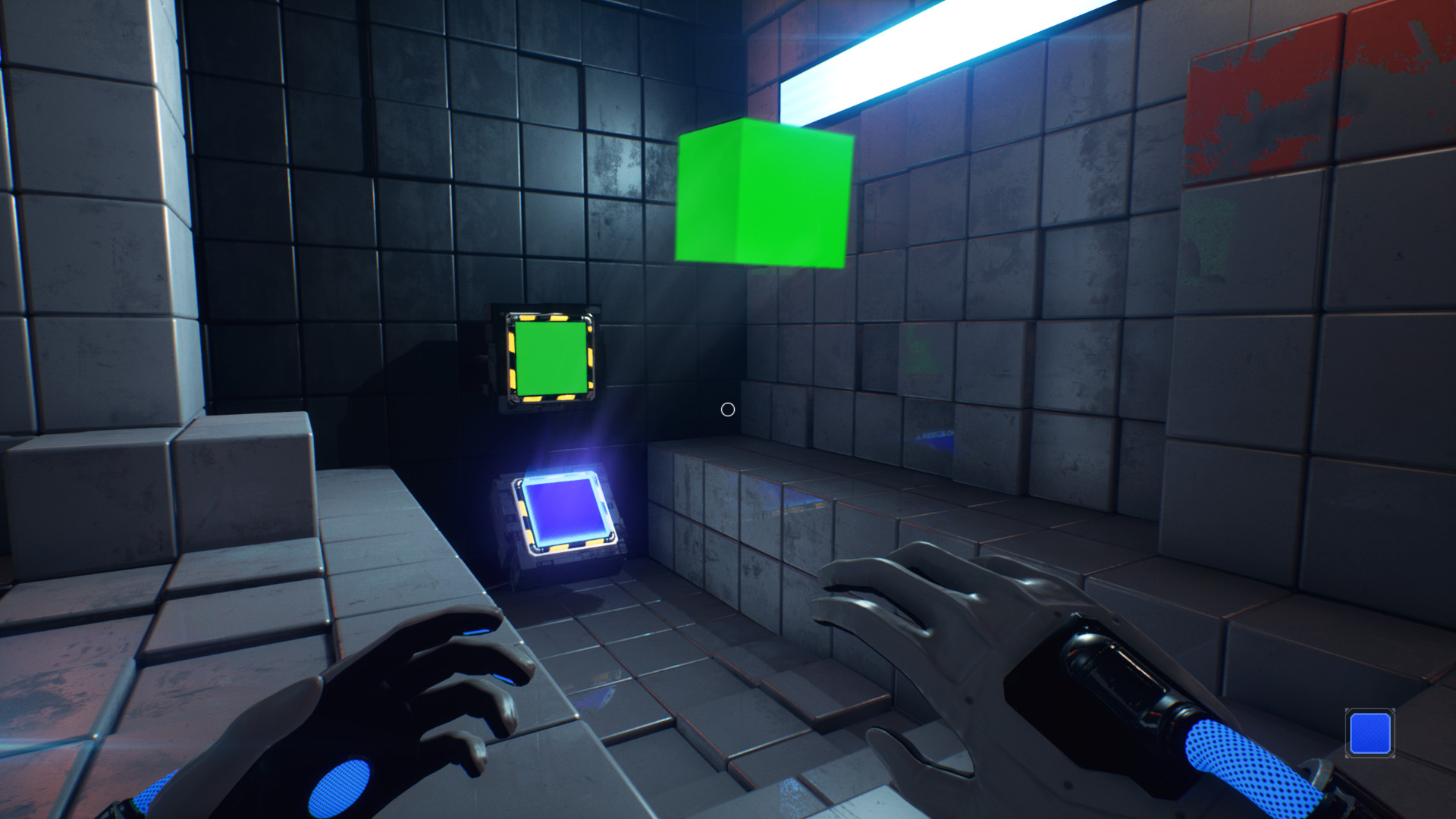Q.U.B.E. 2 is shaping up to be an enthralling puzzler
Quick Understanding of Block Extrusion. 2.

The first Q.U.B.E. was a first-person puzzler set on a giant, mysterious space cube that's going to crash into the Earth if you don't solve some puzzles inside it. It's a simple and somewhat silly premise, but developer Toxic Games managed to wring an engaging story out of it with the help of an interesting partner character. One chapter in, Q.U.B.E. 2 is playing the same notes. Now archaeologist Amelia Cross is stranded on the cube, with only a pair of block-manipulating gloves and a radio for company. But while I'm definitely getting deja vu, I'm also getting invested.
Things start off simple: my gloves are blue. With them, I can turn white cubes into blue jump pads. I dye my first cube and promptly go flying. Before long, I gain another color: red. With red gloves, I can turn cubes into extendable platforms. I can also swap between blue and red gloves at will, and I soon move onto more advanced techniques like using red blocks to stop myself mid-air after launching off a blue block. Which is what Q.U.B.E. has always been about: discovering new ways to apply and combine simple abilities.

Puzzles really ramp up once I get my third color: green. With green gloves, I can turn cubes into block dispensers by dyeing them with the left mouse button and spawning a block with the right mouse button. I can't pick the cube up, but I can push it with red blocks or bounce it with blue blocks. I've only been moving myself up until this point, but now I also have to move green blocks onto buttons and in front of ledges and so on. So, as I design routes through levels, I often have to build one route for a green block to take, then modify and extend the path to let myself through.
This illustrates a recurring motif in Q.U.B.E. 2's puzzles. Most of them are fundamentally about getting to an exit—physically getting to a door, not just opening one. So you build these mouse traps of blocks and platforms, and then you have to run them yourself. But rather than technical skill, successfully running a path comes down to understanding and experimenting with the abilities of each color. Which is the same satisfying formula that made Q.U.B.E. great, so I'm glad to see it return untarnished and refined.

That's not to say Q.U.B.E. 2 is just more of the same, mind. The core systems and rules are back—and that's not a bad thing—but they're presented so much better. The original game consisted almost exclusively of sterile all-white rooms made from cubes that look like modeling clay. Q.U.B.E. 2's environments are much bolder and sharper. The building block cubes that make up everything are metallic and colorful. The lighting is crisper, and the reflections are genuinely some of the best I've ever seen.
That said, for my money Amelia herself is the biggest improvement. As always, it's the little things, like the way she catches herself with her palm and staggers after a fall, the way she flails her arms when you launch off blue blocks, the way she rolls her fingers inquisitively when you acquire new colors. And I love the way she commands blocks. There's so much personality to her movements. Whereas the original Q.U.B.E. made you feel like a doofus with some VR gloves, Amelia comes across as a conductor. I look forward to seeing more of her story when Q.U.B.E. 2 releases a little later this year.
The biggest gaming news, reviews and hardware deals
Keep up to date with the most important stories and the best deals, as picked by the PC Gamer team.

Austin freelanced for PC Gamer, Eurogamer, IGN, Sports Illustrated, and more while finishing his journalism degree, and has been a full-time writer at PC Gamer's sister publication GamesRadar+ since 2019. They've yet to realize that his position as a staff writer is just a cover-up for his career-spanning Destiny column, and he's kept the ruse going with a focus on news, the occasional feature, and as much Genshin Impact as he can get away with.

